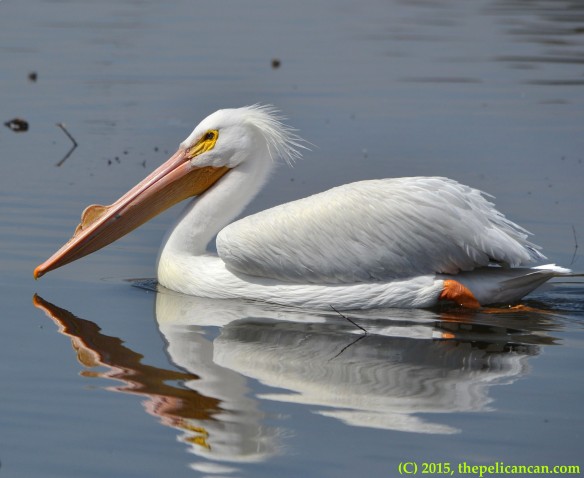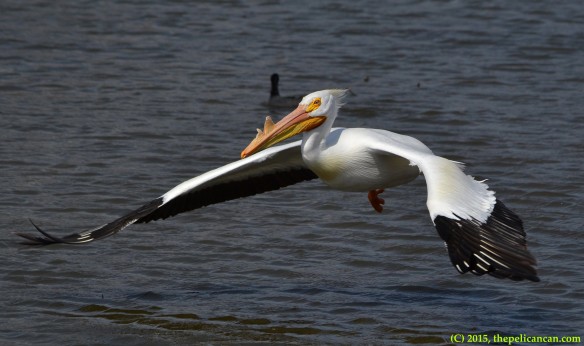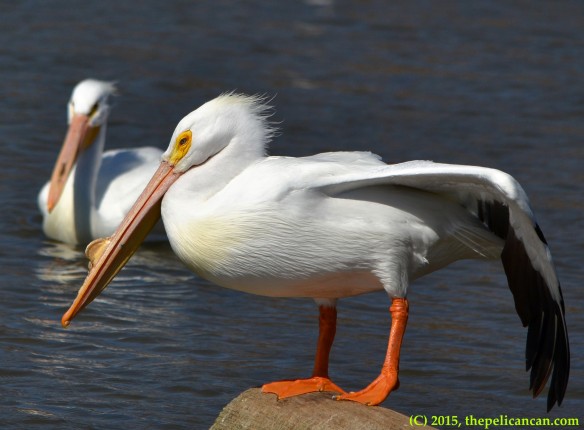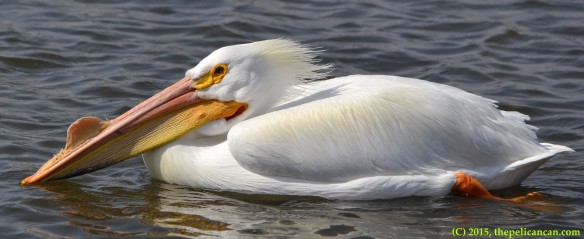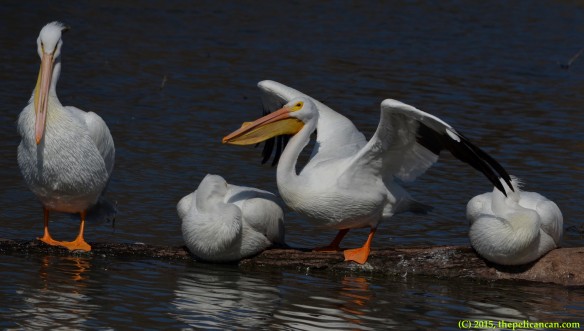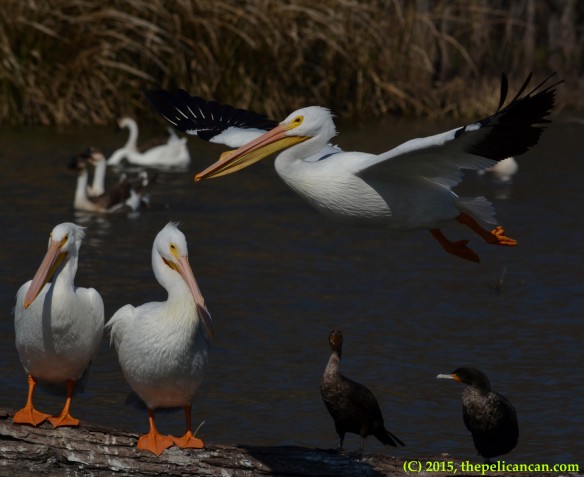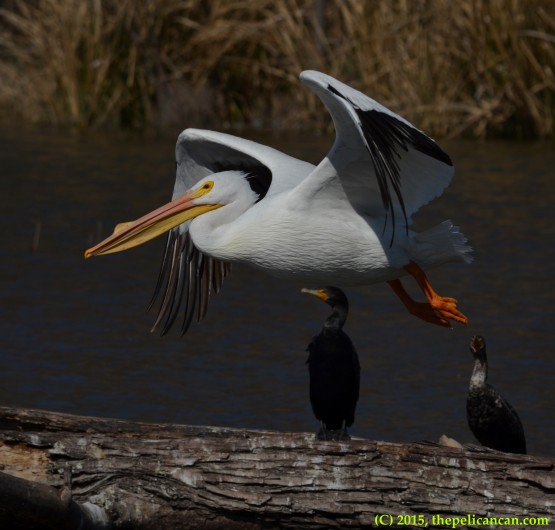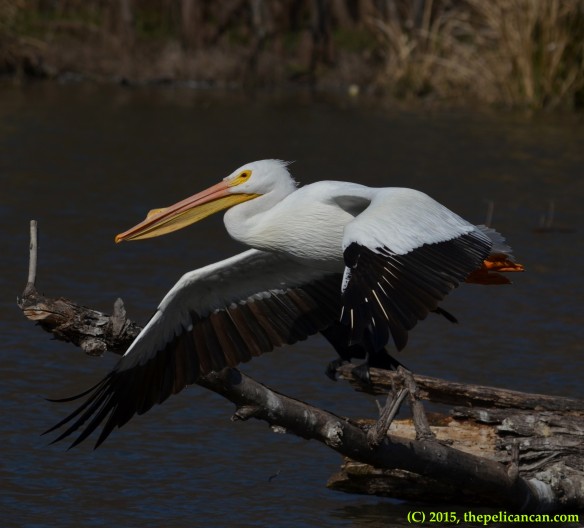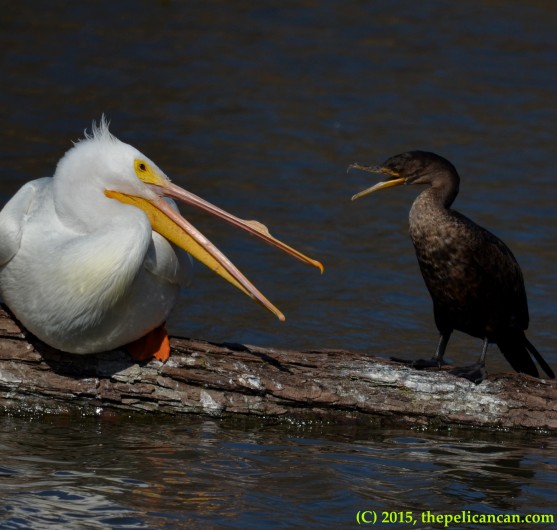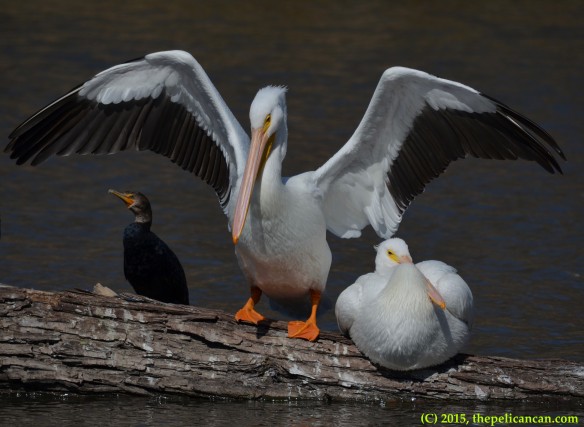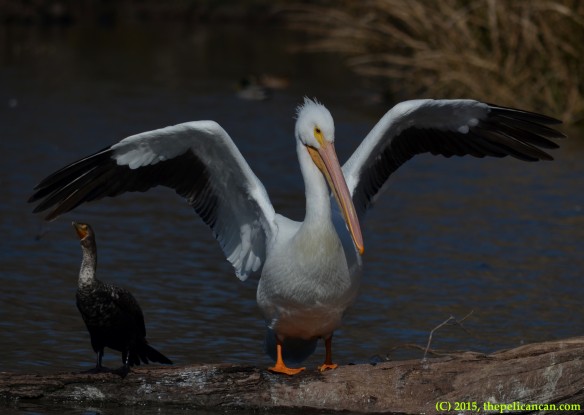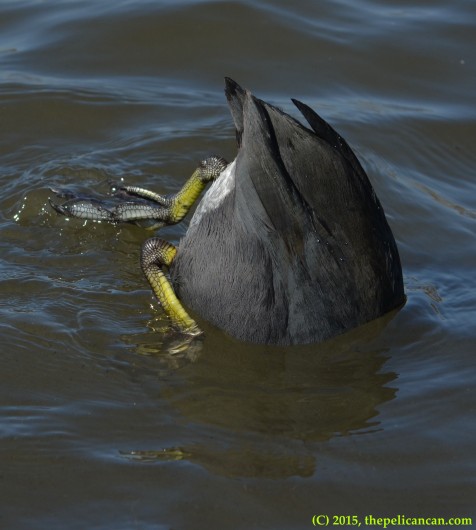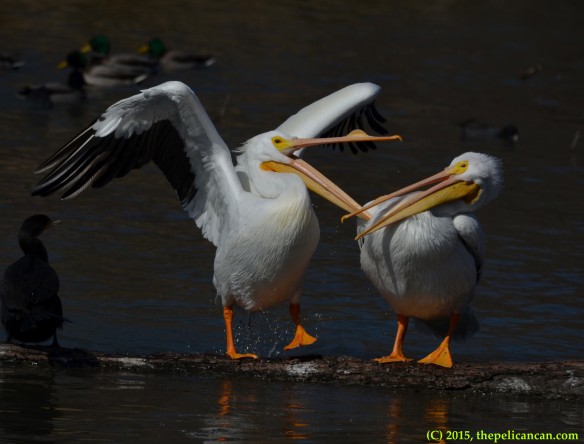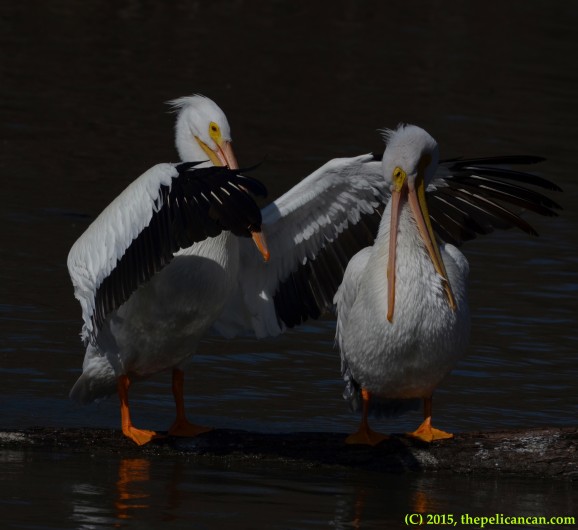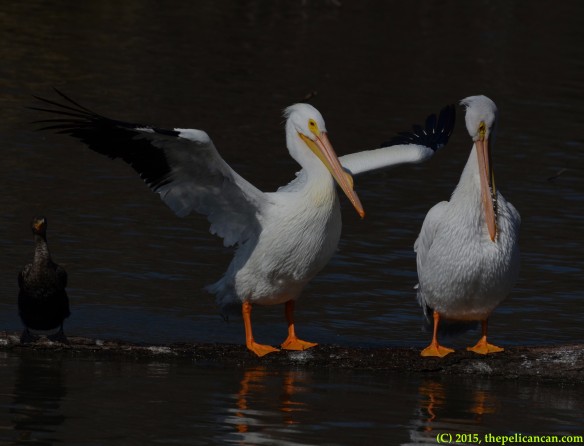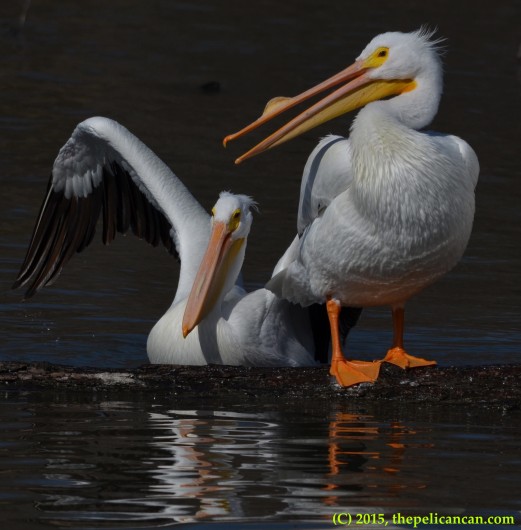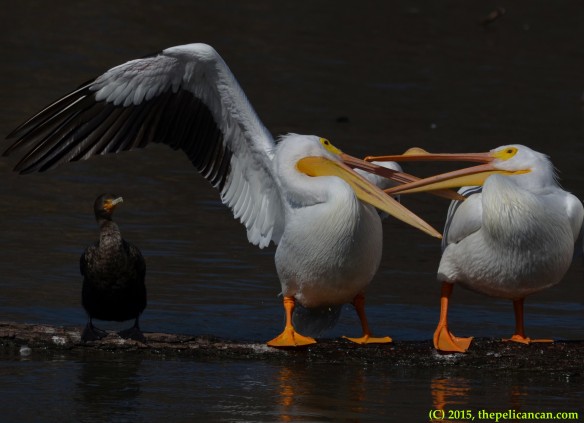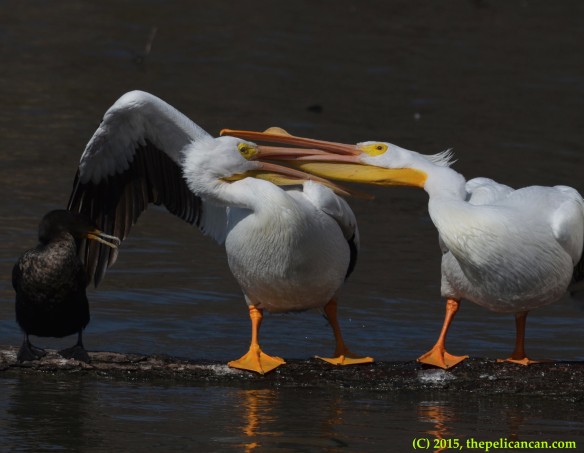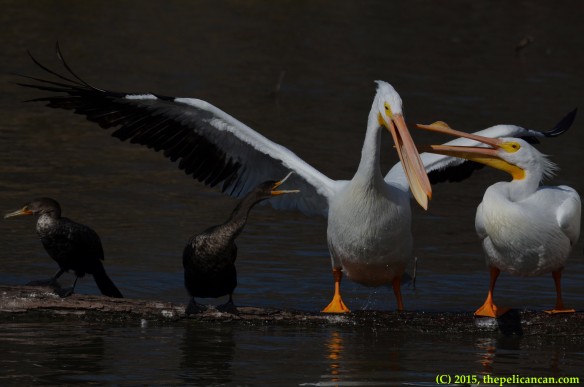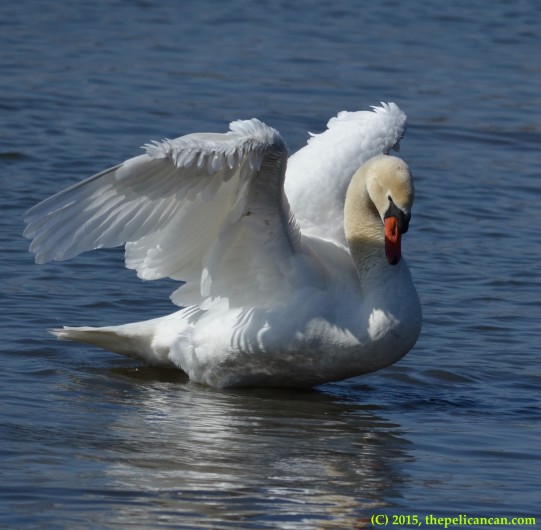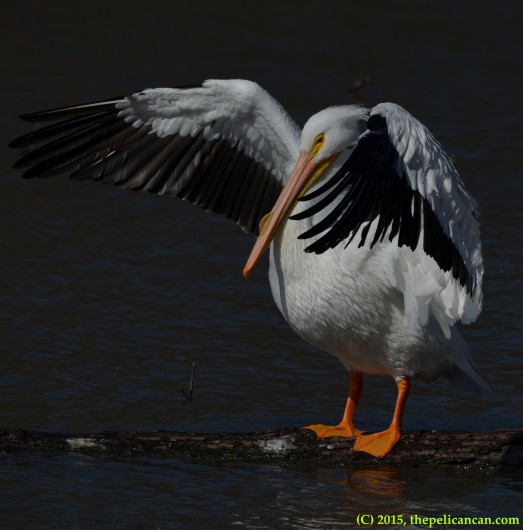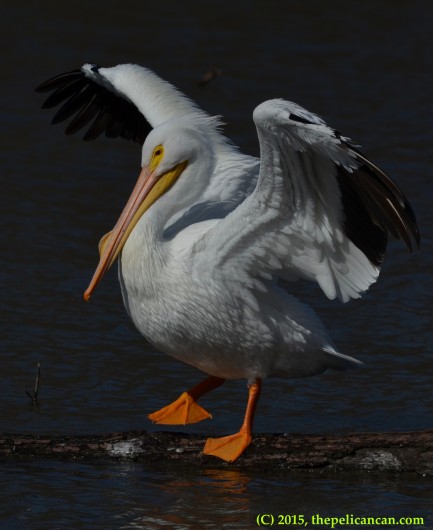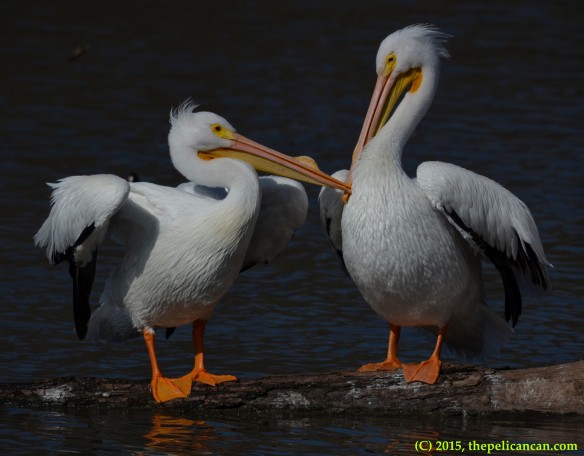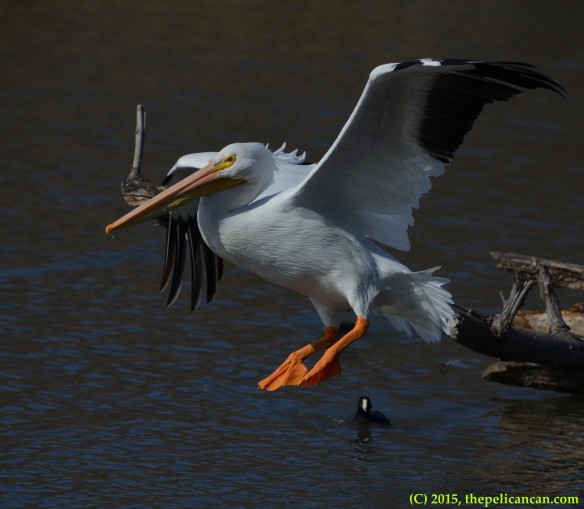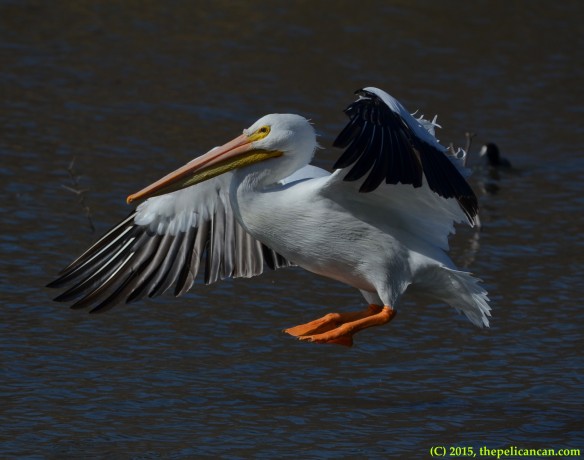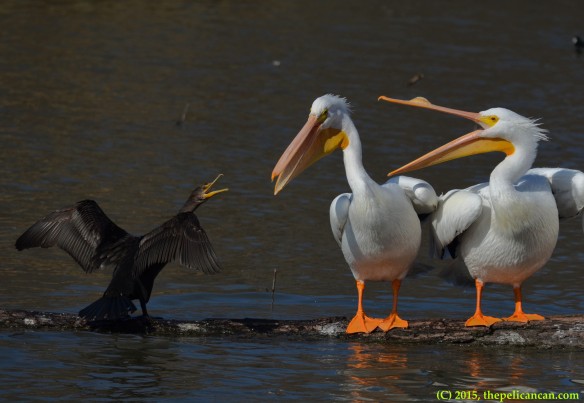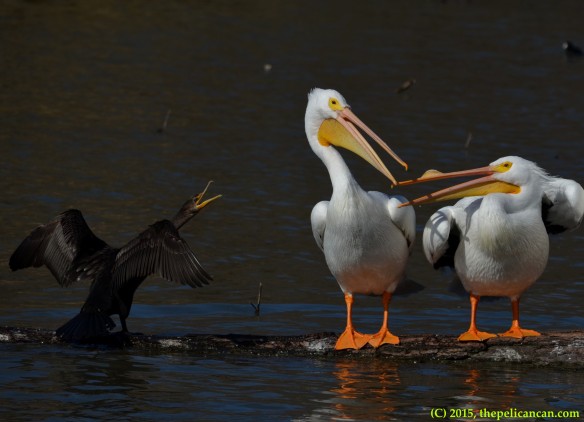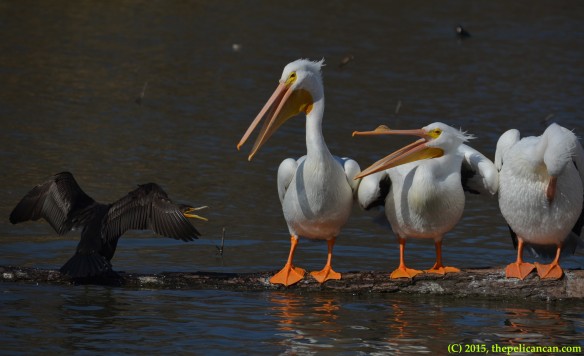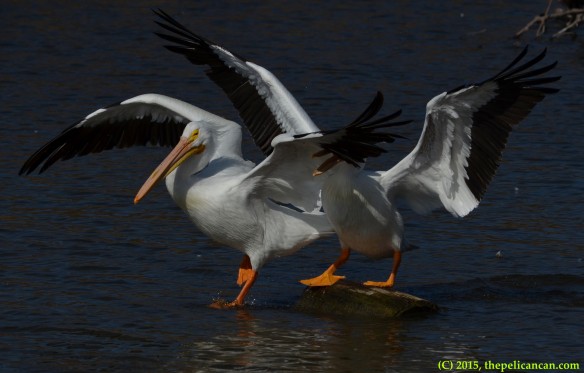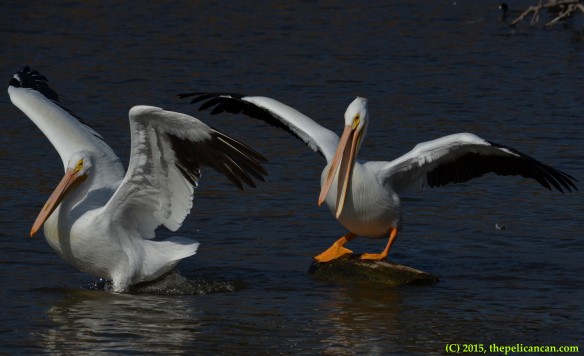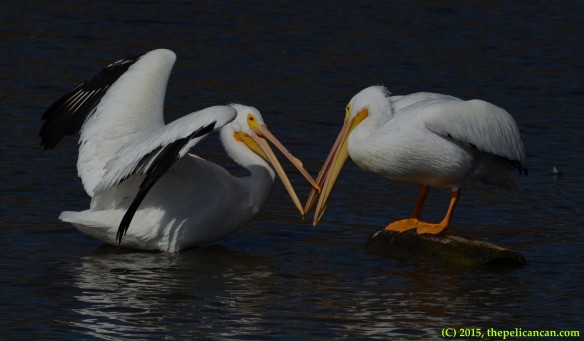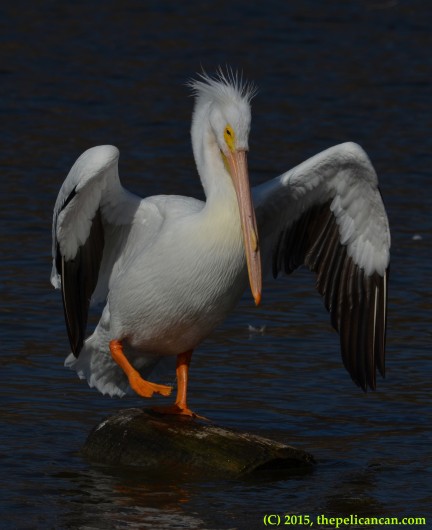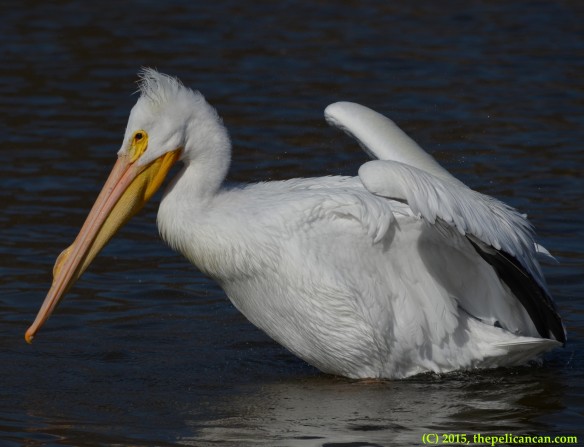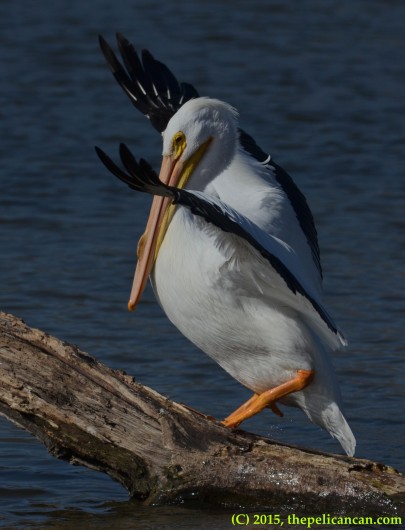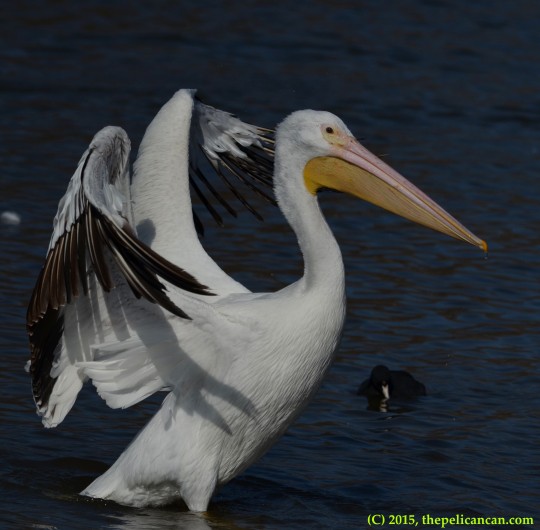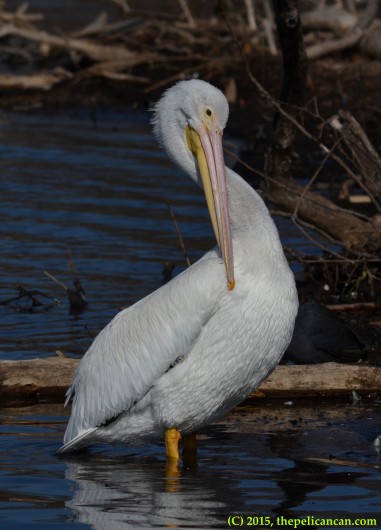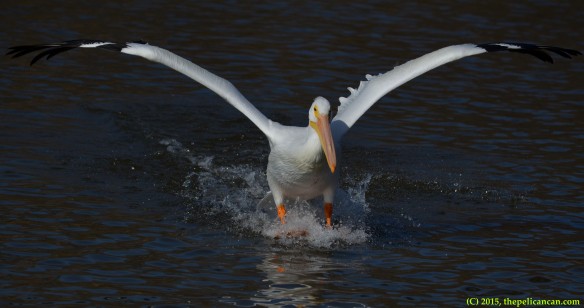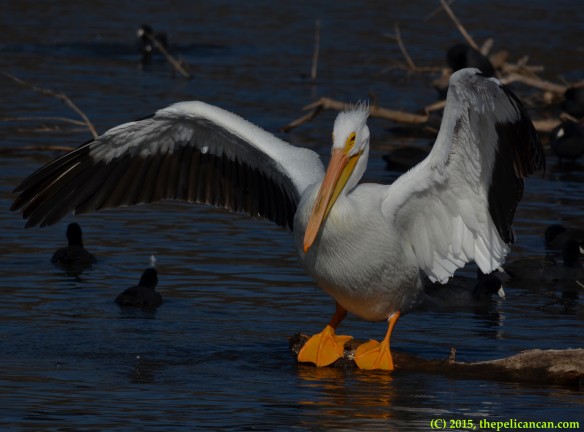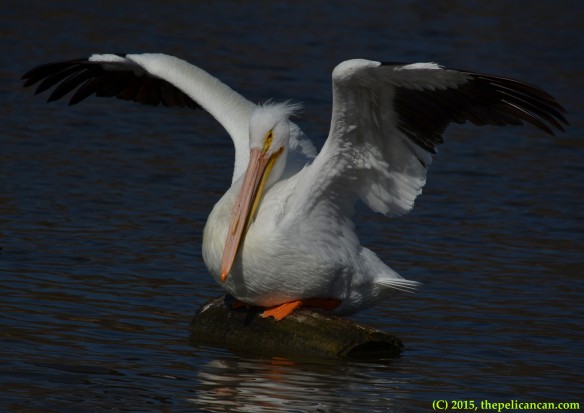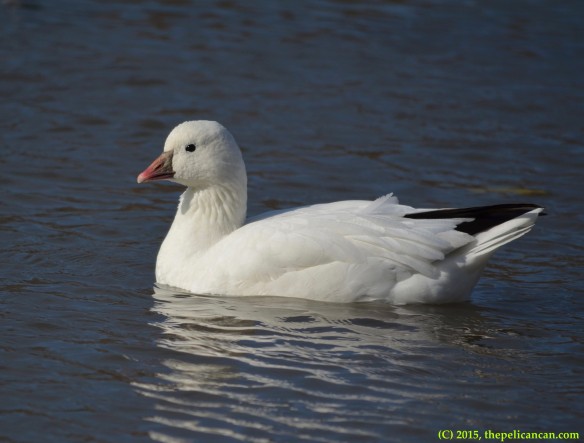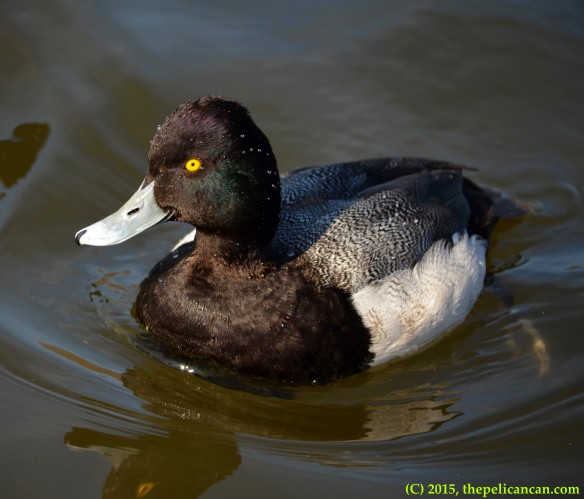It’s time for something old and something (a little closer to) new.
Pelicans, like other birds, begin developing breeding plumage long before they breed. January/February is when I think the pelicans look their best. Their breeding horns are noticeable, but they aren’t huge. Their dark eyes are lightening as the color slowly changes to blue. The plumes on their heads are getting just long enough to have a nice “Crazy Harry” appearance, especially when the wind is blowing.

I suspect that more than a few pelicans have Crazy Harry tendencies beyond the hair.
(Image from muppet.wikia.com)
I think that the pelicans look their ugliest in March, although they are probably super sexy to each other. Their horns are huge. Their breeding plumes have grown so long that they look like unkempt hair that desperately needs a trim (and in the fall, I’m always shocked by their lack of breeding plumes; they look as though their heads have been shaved). Their eyes are light blue, which looks nice with the orange-red of their feet and portions of their pouches, but they also develop ugly black streaks on their bills, gular pouches, and around the contours of their faces.
Here are some pics from mid- and late-March 2014 that show off pelican breeding plumage.
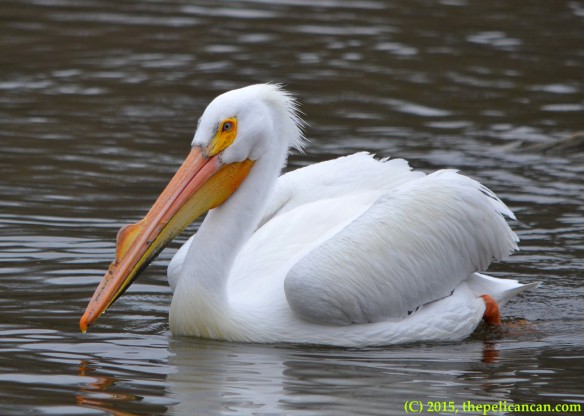
Here you can really see the black streaks around the pelican’s facial features and on her gular pouch and beak.
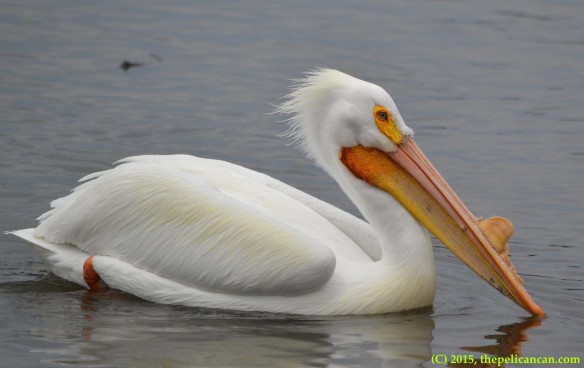
Everyone thinks that the album title “Ol’ Blue Eyes Is Back” refers to Sinatra himself. Everyone is wrong. The title refers to sexy pelicans!
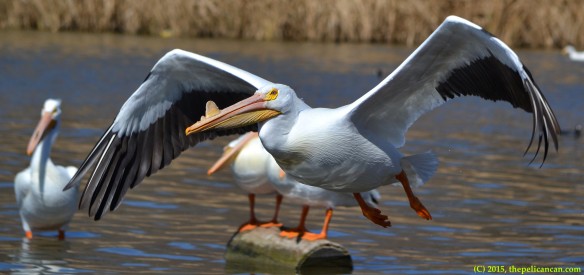
It’s a shame that the pelicans don’t breed here; their breeding horns are so unique that it would be easy to identify individual birds.
February had been a terrific month for pelican watching in 2014. K and I sometimes stayed out for hours watching them. Additional groups of pelicans started passing through, and sometimes in the evenings there were so many pelicans loafing by the dock that the birds were spread out from the loafing grounds to the Queen of the Log log.
Not this February.
I don’t think I saw any noticeably new pelicans. Maybe once or twice I thought there were slightly more pelicans than usual, but I mostly saw a small, stable crew. Some good news is that pelicans that have been here since the beginning of the season, such as Copper Woman, are still here. So is S21; I smile every time I see her green wing tags. But February was mostly gray and cold, and the pelicans spent most of their loafing time huddled up on or near the marshy spit.
So far, March doesn’t seem any good, either. Even on milder days the pelicans are choosing to loaf on the far-away logs instead of near the shore or near the dock. Last year, as more pelicans flew north and fewer birds were left at the lake, the remaining birds moved to the far-away logs, but that didn’t happen until late March. I really hope that the pelicans are loafing on the far-away logs because the water level is too high by the dock. Q and I will be going on a trip to Florida soon, and hopefully I can still observe close-up pelican action when we return.
In early February there were some sunny days when the pelicans were still feeling frisky, so I will post some pics from that time. The action started on the Shore Log. When I first got there, a pelican was preparing to fly.
I tracked her as she sailed past the Shore Log and flew out to the deeper parts of the lake to meet up with the pelicans that were out fishing.
It took me until this winter to realize that both double-crested and neotropic cormorants wintered at White Rock Lake. In January the neotropic cormorants had been very active, and I had enjoyed watching them.
One might think that because the pelicans are so large, they always win a challenge with a cormorant. That’s not true. Sometimes the pelican is scared off. Sometimes the cormorant is scared off. Often the confrontation ends in a draw. This one ended in a draw.
A few more pelicans jumped up onto the Shore Log.
Unfortunately, they didn’t do much but preen, so I went to the dock to see if anything were happening there. All I saw was a bunch of coots feeding.
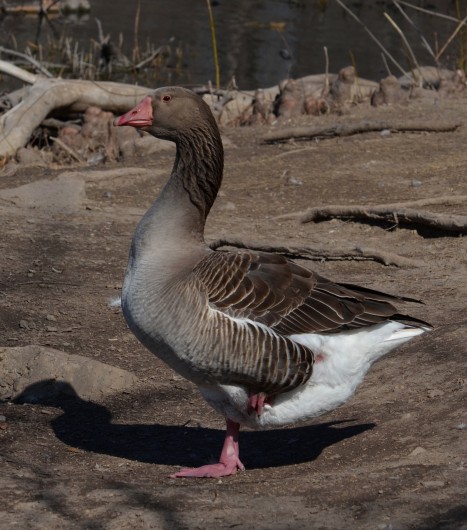
How dare you, sir coot! I am a gentleman! I think no such thing!
Back at the shore, pelicans were flying into the bay and looking for places to loaf. A pelican hopped up onto the log and scared the bejesus out of the pelican next to her.
Luckily for the first pelican, the new bird forgot about fighting and just flapped her wings.
Another pelican got ready to jump up. . . .
. . . She was immediately attacked by the pelican that was already on the log.
Even the cormorant started to get pissed off.
The pelican that had jumped onto the log was losing the fight. She was forced off the log and tried to step forward back onto it.
She managed to get back onto the log, but the attack from the other pelican was so fierce that the beleaguered pelican jumped forward into the water and swam to the marshy spit to loaf there.
I glanced out at the water and caught Lady Katherine finishing a full-flap and sinking back into the water.
The log pelicans were settling down.
A pelican engaged in a very brief bit of allopreening with another pelican. Surprisingly, the other pelican tolerated it. Maybe the preening incident was so brief that the groomed bird didn’t feel the need to attack.
One of the log pelicans squatted down as though she were about to take off. I thought she was going to fly back out to fish, but instead she flew just past the log.
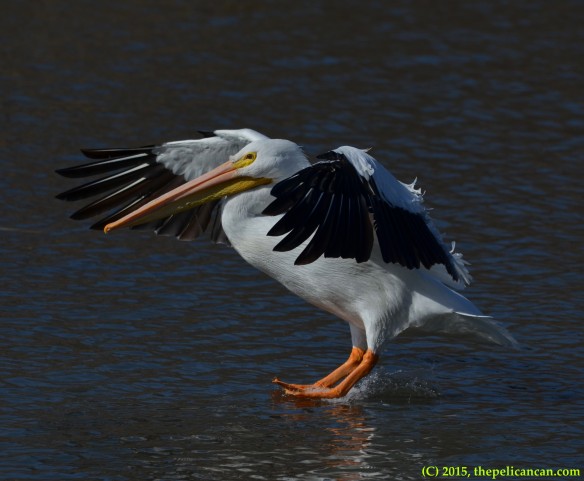
I always enjoy seeing the water that’s kicked up as the pelicans land. Their feet must be unbelievably tough.
Back on the Shore Log, a pelican and a cormorant were squabbling.
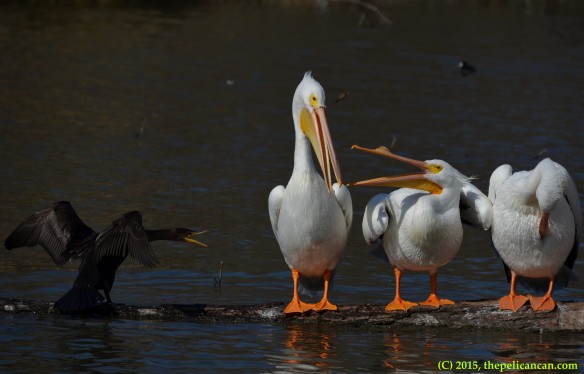
What do you mean, I’m not intimidating enough and I should let you have at the cormorant? I can be intimidating!
The match ended in a draw.
I went back to the dock, where I saw a pelican standing and preening on the Queen of the Log log. Another pelican swam up.
I love watching log fights, but they are hard for me to photograph. I have to guess how much space to allow the birds and where to focus. How far up might their wings go? How far out might their wings go? Will their bodies be fairly compact as they fight, or will one or both of them be flailing around?
Luckily, I caught most of the action.
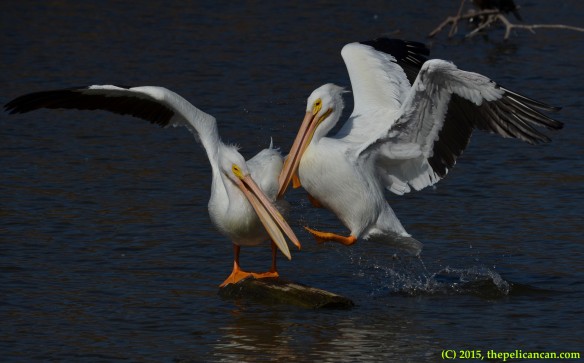
Reminiscent of the pelican that drop-kicked another pelican to knock her off the log, this bird is using her beak to try to push over the log pelican.
The pelican that had lost her place on the log decided to challenge the usurper.
She quickly dispatched the usurper and situated herself back on the log, Queen again.
The defeated pelican performed a rouse, swam out to another log, and hopped on.
A juvenile flew in, ran to the shore, but before getting onto the land, stopped to preen.
Another pelican flew in and went right for the log behind the juvenile. The log is a new addition to the loafing grounds by the dock. The pelicans love it. I’m not sure whether it’s still there or if it floated somewhere else with all the rain we got in late February.
That was it for the pelicans that day, but two other birds decided to be photogenic. First was Cutie Pie.
The other was a male lesser scaup. Sometimes I see one or two by the dock, but they aren’t there every day like they were last year. They are very pretty, especially when the sun is shining and I can see the iridescence in their feathers.

